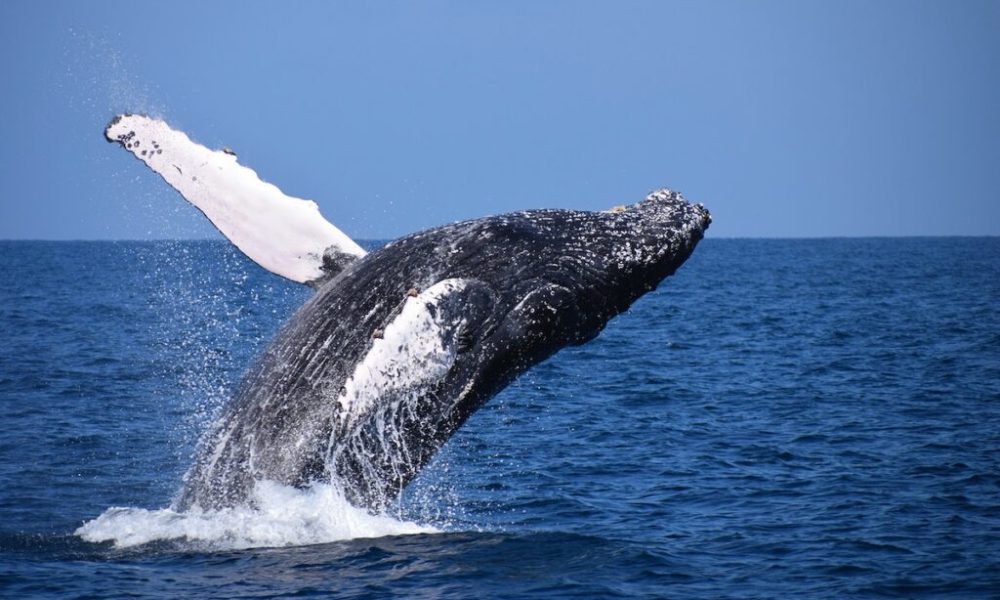
A Whale of a Tale
The Ocean’s Secret Weapon Against Climate Change
When thinking about fighting climate change, we imagine solar panels, electric cars, or planting trees. But the ocean has a natural climate superhero we rarely talk about — whales.
Yes, whales.
These majestic giants are more than awe-inspiring creatures. They’re surprisingly powerful carbon sinks — natural tools for pulling planet-warming carbon dioxide (CO₂) from our atmosphere and locking it away for centuries. And if we let their populations recover, they could supercharge our fight against global warming.
How Whales Help Capture Carbon
Whales are part of what’s known as the blue carbon cycle, the ocean-based processes that absorb and store carbon. According to the National Oceanic and Atmospheric Administration (NOAA), this includes carbon captured by ocean animals, seafloor sediments, marine plants, algae, and phytoplankton.
Phytoplankton — microscopic ocean plants — are especially crucial. They absorb CO₂ through photosynthesis and produce at least half of the world’s oxygen. But here’s where whales make the magic happen: by feeding in nutrient-rich waters and migrating to nutrient-poor regions to breed, whales “fertilize” the ocean with waste full of iron and nitrogen. This waste sparks massive phytoplankton blooms, boosting CO₂ capture and oxygen production.
The International Monetary Fund (IMF) estimates that phytoplankton, aided by whale activity, capture around 37 billion metric tons of CO₂ every year — roughly 40% of all emissions. That’s the same as what 1.7 trillion trees or four Amazon rainforests could capture.
Whales Store Carbon in Their Bodies — Even After Death
Whales don’t just support carbon capture through fertilization. Their massive bodies store carbon for decades. When they die, most sink to the ocean floor in what scientists call a “whale fall.” There, their bodies become deep-sea ecosystems, and the carbon they contain is buried in the seafloor, effectively locked away for centuries.
But we’re missing out on much of that benefit.
The Cost of Commercial Whaling
Since the 19th century, industrial whaling has slashed whale populations by more than 80%, with some species like blue whales declining by as much as 97%. That’s not just an ecological tragedy, it’s a huge climate setback. One study estimates that the loss of these whales cost us around 17 million metric tons of carbon storage, just from the carbon that would’ve been locked in their bodies. That’s roughly equal to the annual CO₂ emissions of about 13.5 million passenger cars or about the same amount of carbon stored in 680 million mature trees!
Today, only around 1.3 million great whales remain, just a small portion of their estimated pre-whaling population of 4 to 5 million.
Why Saving Whales Could Be a Climate Game-Changer
Here’s the wild part: if whale populations recover, even modestly, they could dramatically boost global CO₂ capture.
Scientists estimate that just a 1% increase in phytoplankton growth triggered by whale activity would remove hundreds of millions of tons of CO₂ annually. That’s like planting 2 billion mature trees — every single year.
Whales also contribute to a fascinating global carbon circulation system known as the “whale conveyor belt.” As baleen whales (like blue, fin, gray, and right whales) migrate thousands of kilometers across the ocean, they spread nutrients wherever they go, stimulating phytoplankton growth even in the most barren parts of the sea. The gray whale, for example, can travel up to 22,000 km (13,670 miles) round-trip annually. It migrates between feeding grounds in the Arctic and breeding lagoons in Mexico, helping to circulate nutrients across oceans.
Signs of Hope — and Challenges Ahead
Thanks to international protections like the Marine Mammal Protection Act and the Endangered Species Act, some whale populations are slowly bouncing back. Humpback whales in the South Atlantic and blue whales off the U.S. West Coast are both showing signs of recovery. Even gray whales are reappearing in higher numbers along the Pacific.
But not all species are rebounding. And even with commercial whaling largely curbed, whales face modern threats: ship collisions, fishing gear entanglements, underwater noise pollution, and plastic waste all continue to kill thousands of whales every year.
What’s a Whale Worth?
Economically, each great whale is valued at over $2 million, thanks to their carbon storage, oxygen production support, and ecotourism benefits. That means the current global whale population represents over $1 trillion in ecological value.
But to realize that value, we need to invest in whale recovery. That means more than just banning whaling. It requires funding protection programs, supporting conservation in lower-income countries, and integrating whale preservation into global climate policies like the Paris Agreement.
Institutions like the IMF, World Bank, and UN are well-positioned to help nations fund whale protection efforts and ensure compliance with environmental commitments. It’s time we treat whales not just as wildlife, but as powerful allies in climate resilience.
The Bottom Line? Let Whales Live
Nature designed whales to be climate warriors. All we have to do is stop killing them and give them space to thrive. If we do, they’ll repay us in the most priceless way imaginable: a cooler, more breathable planet.



This is an awesome post. I never knew whales did that. Thank you!